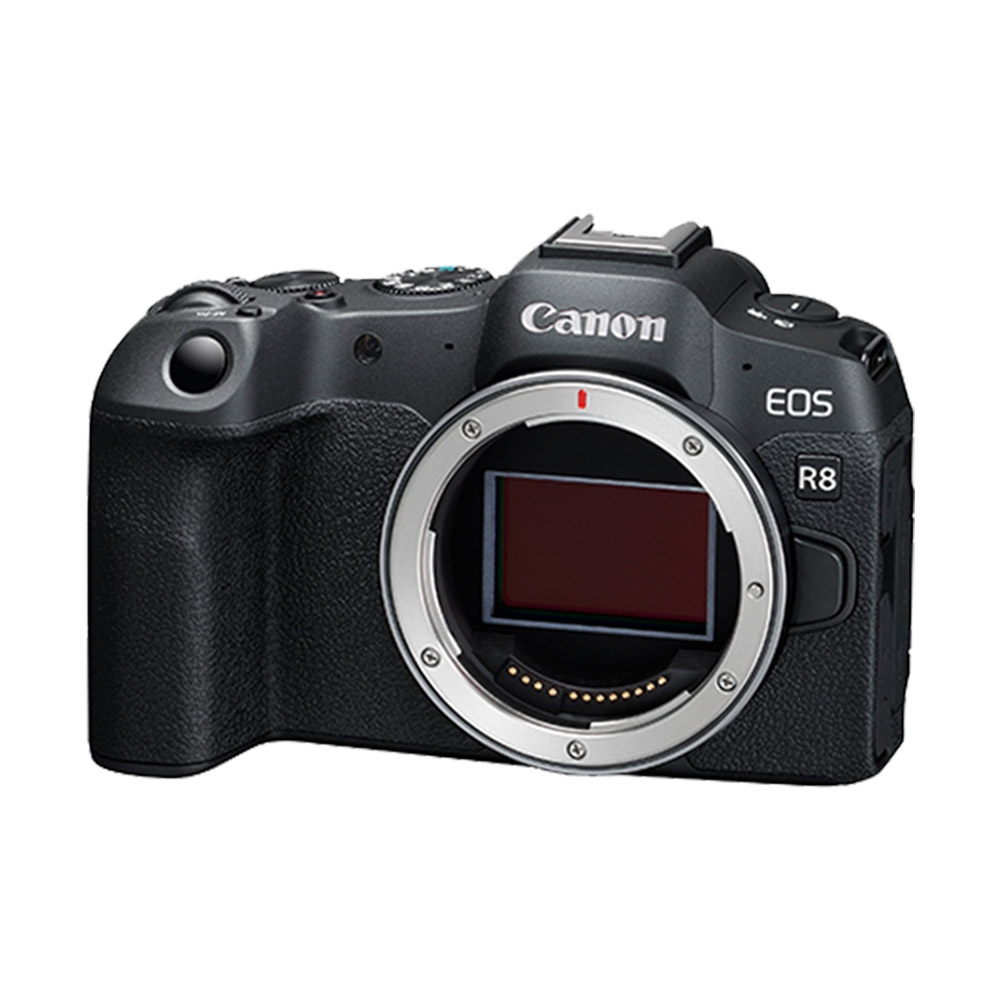Canon 全新相機收購,二手收購,收購相機,全新相機,二手相機 收購5D Mark IV,收購EOS-1D X Mark II,收購EOS M3/M10 收購canon canon 5Ds/5Ds R,,5D Mark III/6D II,7D Mark II 70D/80D,750D/760D,700D/100D 收購FUJIFILM 相機,全系列FUJIFILM 收購二手Nikon 相機,Nikon二手收購,全新Nikong買賣 D3400收購 Nikon 1 j5收購 D750 Df/D810/D610,D5/D4S,D500,D7200/D7500,D5500/D5300 OLYM
分類: 全新相機收購
傳 Canon 今年再推一款隨身相機!搭 20 倍變焦成旅遊神機 全新相機收購
全新相機收購
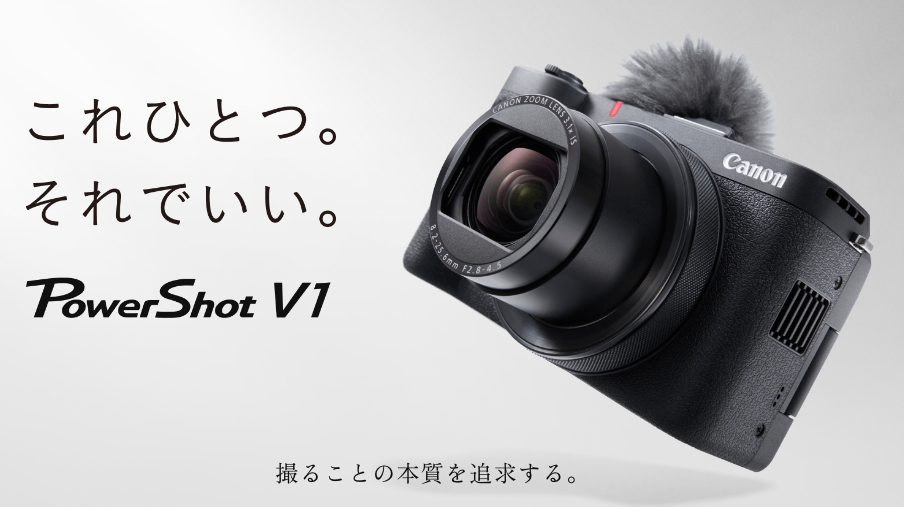 PowerShot V1 搭載等效焦距約 16-50mm、F2.8-4.5 的光圈鏡頭,並具備 2230 萬像素。(圖/翻攝 全新相機收購canon官網)
PowerShot V1 搭載等效焦距約 16-50mm、F2.8-4.5 的光圈鏡頭,並具備 2230 萬像素。(圖/翻攝 全新相機收購canon官網)
全新相機收購canon 於上月發布 PowerShot V1 再度進攻隨身相機市場,藉由加入冷卻風扇可連續錄製 4K 30p 影片兩個多小時,主要瞄準 Vlog 拍攝。據傳 全新相機收購canon 還準備了另一款以「變焦能力」為最大賣點的 PowerShot V3,會更適合喜愛拍照的消費者。
外媒《全新相機收購canonRumors》 消息指出,全新相機收購canon 預計在今年下半年發布 PowerShot V3,將會採用與 PowerShot V1 相同的 1.4 吋感光元件,尺寸十分接近 APS-C 又能比 1 吋感光元件大上兩倍。鏡頭則會搭配一顆 20 倍光學變焦的鏡頭,可以覆蓋等效焦距 24mm-480mm 的拍攝距離,出遊遠景輕鬆捕捉。
《全新相機收購canonRumors》猜測 PowerShot V3 主要會面向靜態攝影,因此不會內建風扇等冷卻系統,或代表機身有望比 PowerShot V1 更加輕巧,同時亦有望搭載電子觀景窗以利在強光環境構圖,推測價格會落在 899 美元(約 29,596 元)。
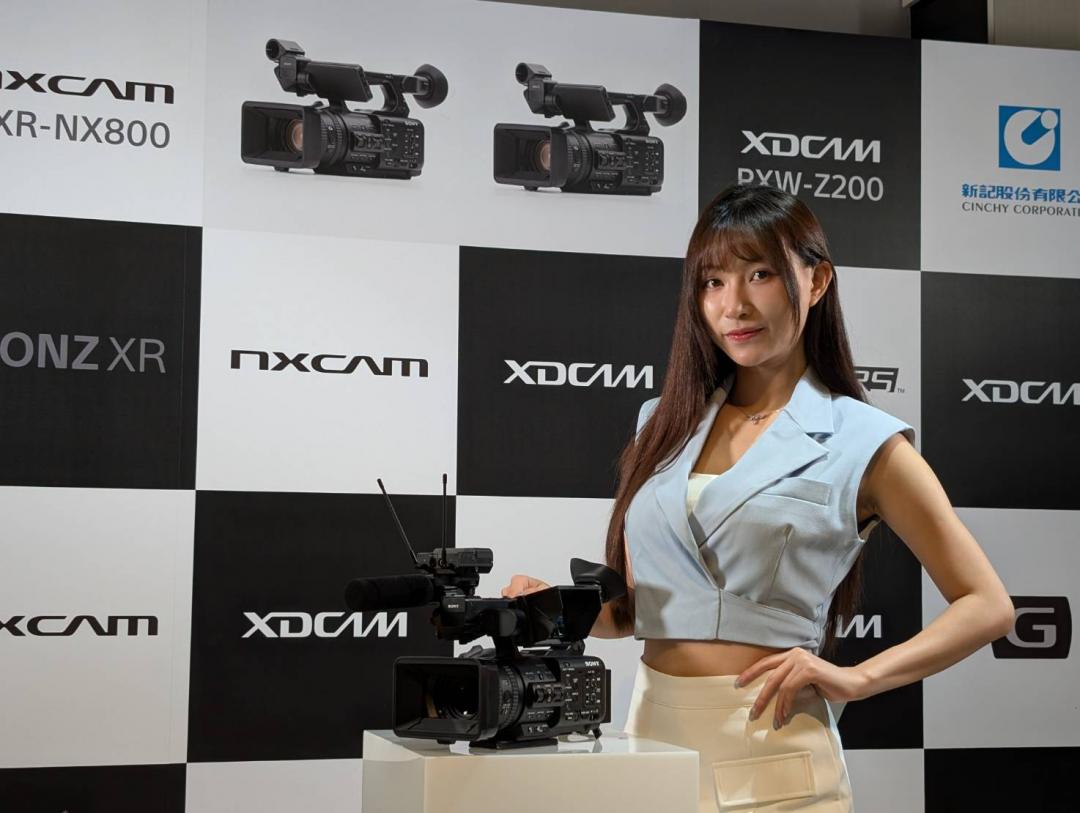 PXW-Z200、HXR-NX800 可支援最近 1 公分的對焦距離,拍攝婚禮上的戒指小物,都能貼近拍攝。(圖/記者黃肇祥攝)
PXW-Z200、HXR-NX800 可支援最近 1 公分的對焦距離,拍攝婚禮上的戒指小物,都能貼近拍攝。(圖/記者黃肇祥攝)
Sony 在台灣帶來兩款 NXCAM 系列的一體式手持專業攝影機 PXW-Z200 與 HXR-NX800,透過最新的 AI 技術強化對焦能力,以及增添 20 倍的長距離變焦,搭配最高 5K 的畫質,滿足製作公司與專業人士的拍攝需求。
NXCAM 系列是瞄準專業用戶而生的一體式相機,採用 1 吋 Exmor RS CMOS 感光元件,並透過 BIONZ XR 影像處理器解鎖高速的數據傳輸能力,使 PXW-Z200、HXR-NX800 可以拍攝 4K 120fps 與 HD 240fps 影片,並且透過超採樣獲得 5K 解析度,在白天拍攝得以獲得更多細節,夜晚更能有效減少畫面上的噪訊。
Sony 這次也引入已經在 Alpha 相機應用的 AI 處理元件,讓 PXW-Z200 與 HXR-NX800 對焦覆蓋畫面區域達 81%,並且擁有 7 級自動對焦轉換速度與5級的自動對焦主題移動靈敏度,能夠識別人眼與肢體的動作,並搭配 20 倍的變焦能力實現「自動取景」功能,讓攝影師不必碰觸設備,就能讓 AI 自行追蹤、裁切畫面,確保拍攝人物能始終保持在正中央。
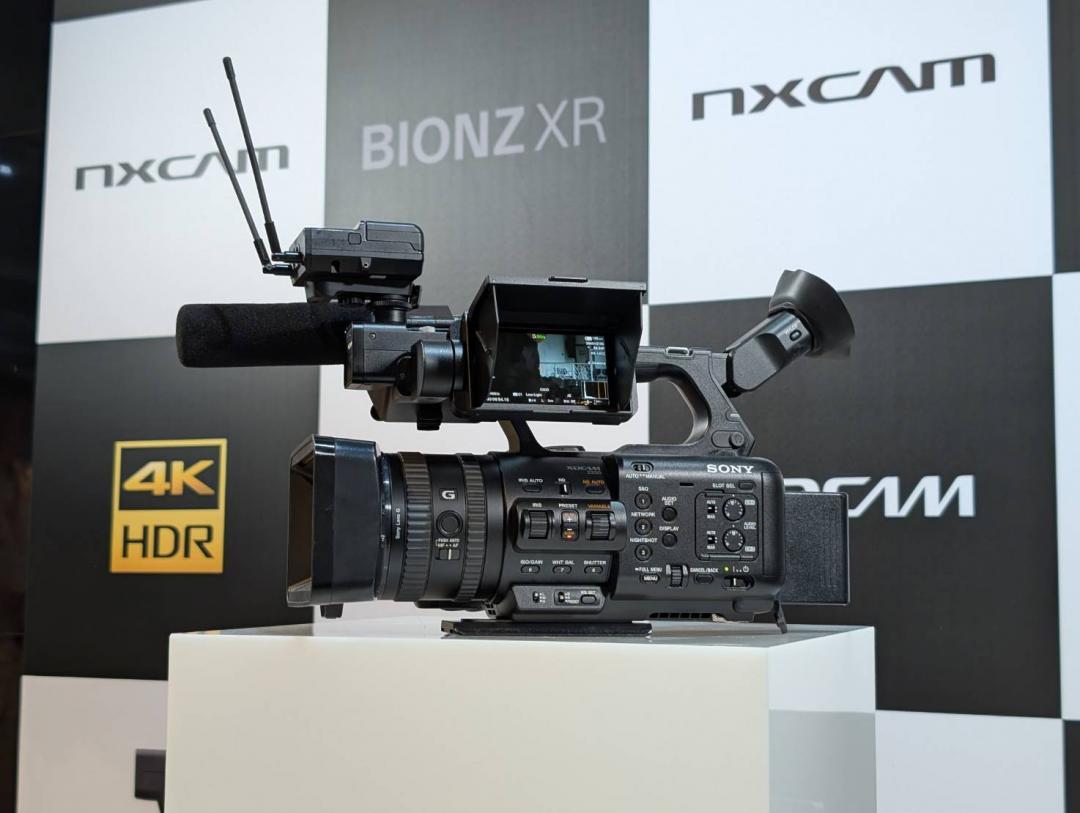 (圖/記者黃肇祥攝)
(圖/記者黃肇祥攝)
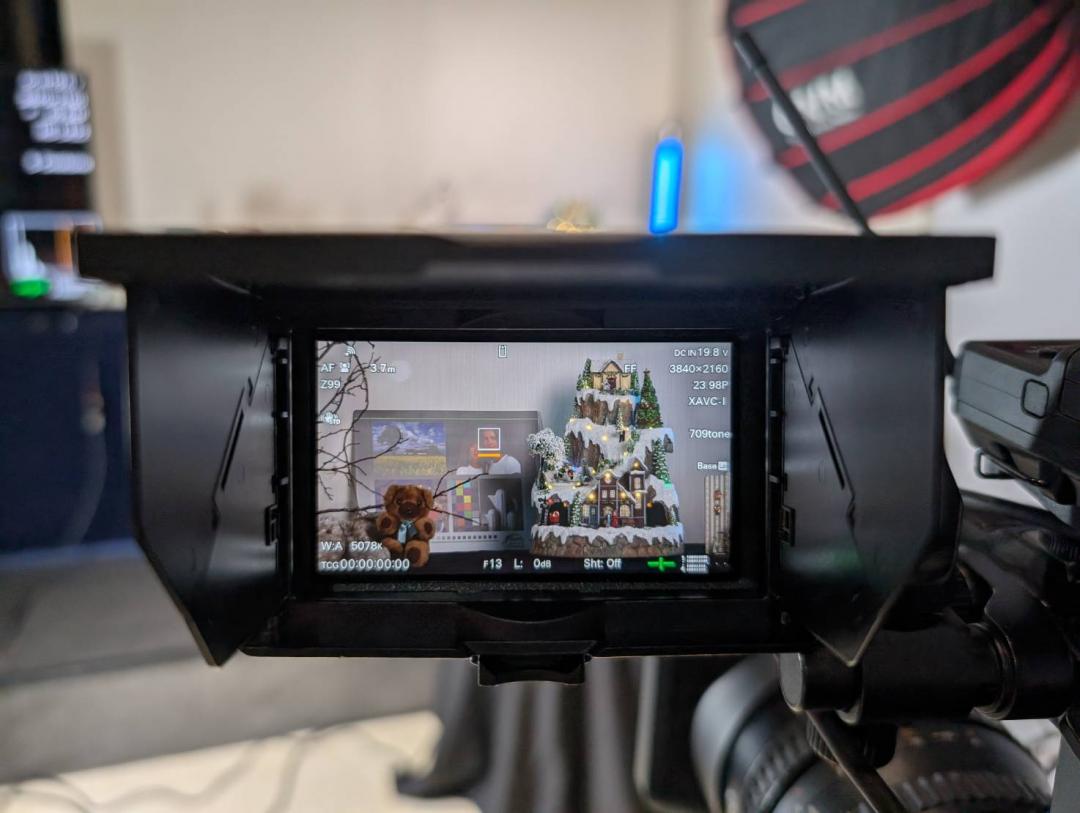 兩款新機均採用 mini LED 背光螢幕,以確保大太陽底下有充足的亮度與鮮豔的色彩,機身的 EVF 也可以下折,方便收納之餘,也能關閉感應器,提供更彈性的使用模式。(圖/記者黃肇祥攝)
兩款新機均採用 mini LED 背光螢幕,以確保大太陽底下有充足的亮度與鮮豔的色彩,機身的 EVF 也可以下折,方便收納之餘,也能關閉感應器,提供更彈性的使用模式。(圖/記者黃肇祥攝)
迎合專業片場的拍攝需求,PXW-Z200、HXR-NX800 機身提供多達 12 顆自訂按鍵、4 組轉盤(對焦、變焦、光圈與 ND 減光鏡),用戶能夠一鍵切換全自動模式,又或者以手動模式全程監管,再依照需求開啟自動 ND、光圈等功能。同時,為了避免發出多餘的聲音影響收音,Sony 在變焦馬達、ND 減光鏡的切換過程,都設有快速且安靜的無段式設計。
Sony 手持專業攝影機 PXW-Z200、HXR-NX800 預計十月初在台上市,價格分別為 188,260 元與 165,160 元。兩款產品的核心規格均相同,差別在於 PXW-Z200 額外增添更多介面接口,如 SDI、TC 輸入/輸出,還會在明年第三季加入 XAVC(MXF)錄製格式。
全新相機收購 全新相機收購
《本週5大科技新聞》最新單眼王者出爐!庫克一句話恐讓台灣果粉失望 全新相機收購
全新相機收購
最新單眼王者出爐!日本年度熱銷排行榜 Top 3 洗牌了;蘋果AI確認4月支援中文 庫克一句話恐讓台灣果粉失望;新主機 Switch 2 漲定了?任天堂社長終於鬆口回應;最有台灣味的 AI 手機!華碩旗艦手機 Zenfone 12 Ultra 正式發表;超越S24紀錄!韓國三星公布S25驚人預購銷量、這款賣超好。
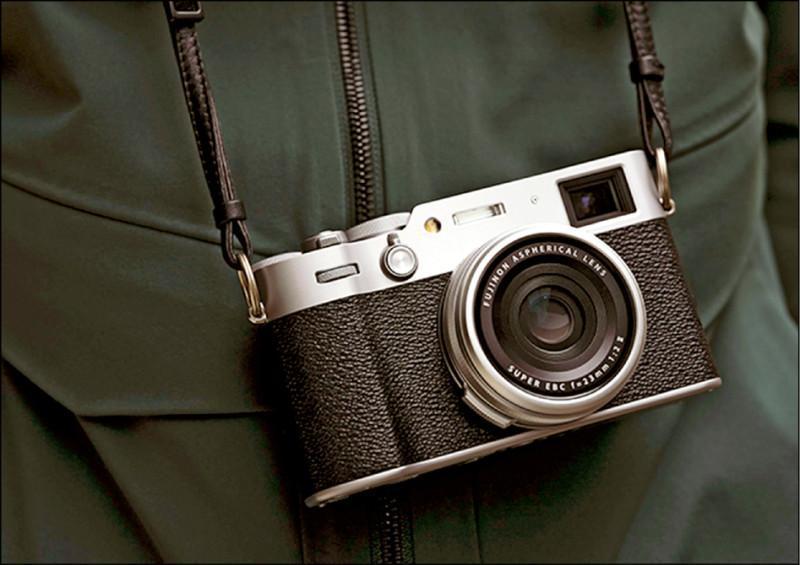 (圖/翻攝富士官網)
(圖/翻攝富士官網)
相機市場迎來變動!日本市調機構 BCN 稍早公布 BCN 年度大獎,統計日本部分實體通路的銷售數據,揭曉 2024 年各類別相機、鏡頭最熱銷的前三大品牌…繼續閱讀
全新相機收購canon 官方給暗示!傳最快下月重返「隨身相機」市場
傳 Meta 將推出運動版「智慧眼鏡」!錄影畫面可媲美運動相機
 Apple Intelligence將在4月支援更多語言,目前無法確認屆時是否提供繁體中文。(圖/路透社)
Apple Intelligence將在4月支援更多語言,目前無法確認屆時是否提供繁體中文。(圖/路透社)
蘋果執行長庫克在最新的財報電話會議中證實,Apple Intelligence接下來將支援更多語言,包括中文、韓文、日文、法文、德文、義大利文和葡萄牙文等。預計在4月隨著iOS 18.4更新上線。這原本是一個好消息,但可能讓台灣用戶感到失望的是,庫克在會議中僅提及了「簡體中文」,並未特別說明「繁體中文」…繼續閱讀
AI換機潮沒來?蘋果營收創新高iPhone卻下滑、庫克這樣說
iOS 18.3耗電嗎?iPhone續航實測出爐、蘋果突發二次更新
 任天堂將於4月2日正式發佈Switch 2,玩家關心是否會漲價。(圖/路透社)
任天堂將於4月2日正式發佈Switch 2,玩家關心是否會漲價。(圖/路透社)
任天堂在上月釋出Switch 2的預告影片,正式揭曉外觀設計,並宣布於4月2日的記者會進一步公開具體細節,全球各大城市也將陸續舉辦體驗會。然而,除了新機規格,玩家也相當關心Switch 2的價格,對此,任天堂首次給出初步答案…繼續閱讀
任天堂公布 Switch 2 發表會時間!網揪神秘數字或暗示開賣日期
就等任天堂Switch 2來救?日本遊戲機市場陷5年最慘衰退
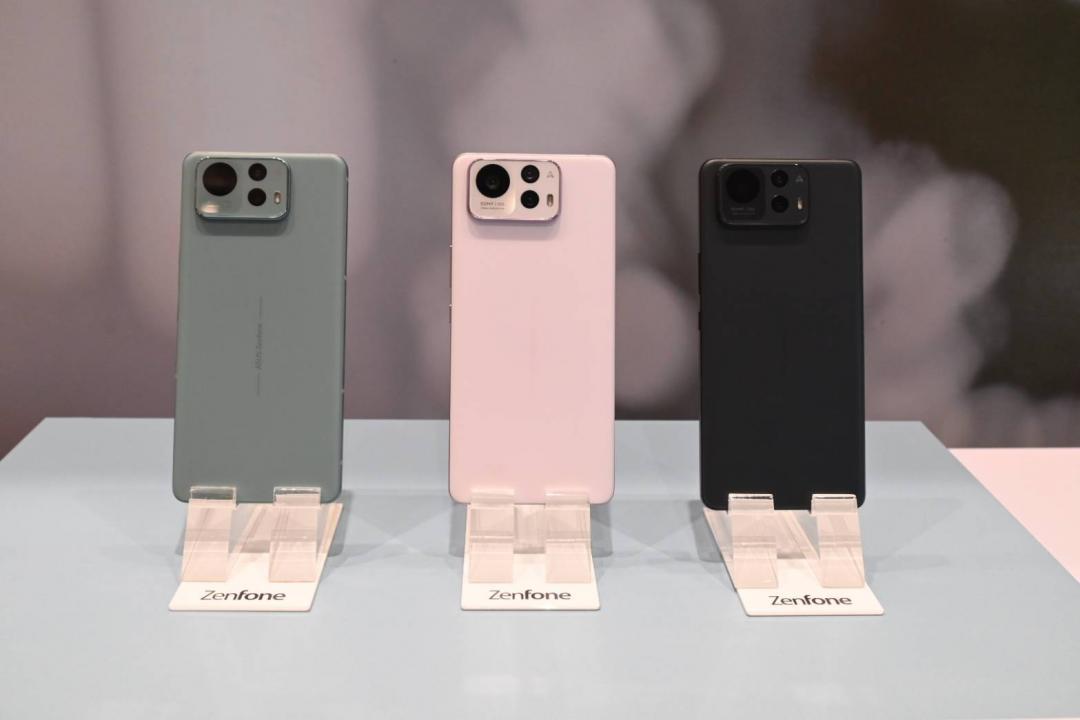 (圖/記者黃肇祥攝)
(圖/記者黃肇祥攝)
華碩 2025 年第一款旗艦手機 Zenfone 12 Ultra 正式登場!搭載高通最新 Snapdragon 8 Elite 晶片帶來 40% NPU 效能提升,藉此引入多項 AI 功能,無論是相機拍攝、網頁瀏覽、旅遊溝通都更加便利,更強調台灣的在地化處理…繼續閱讀
Zenfone 12 Ultra 隱藏升級藏在這!華碩高層解密:真正解放 AI 效能
 (圖/路透社)
(圖/路透社)
三星新旗艦S25系列在台開放預購,並預計2月14日上市。搶先開賣的韓國已率先揭曉預購成績,三星宣布S25系列打破S24系列的121萬台紀錄,在韓國創下S系列史上最高的預購銷量,高達130萬台...繼續閱讀

▲台灣資安廠商匯智安全科技參加日本CEATEC展,推出全球首支整合檔案加密功能的無密碼認證金鑰SAMURAI Key(武士之鑰)。(圖/匯智提供)
記者蘇位榮/台北報導
隨著科技的快速進展,駭客技術不斷革新,其中密碼破解已成為資料侵入的首選策略。研究指出,大約有80%的資料外洩皆與密碼安全有關。一旦密碼被破解,不論個人或企業,資訊安全都會面臨巨大威脅。
台灣資安廠商匯智安全科技日前參加日本CEATEC消費電子展,推出全球首支整合檔案加密功能的無密碼認證金鑰SAMURAI Key(武士之鑰),不僅提供無密碼認證,更加強了資料加密保護,有效降低資料外洩的風險。
密碼外洩不僅可能導致隱私資料遭竊,更可能使企業遭受財務損失及品牌受損,甚至面臨法律訴訟。因此,加強資訊安全和密碼保護已成為當前急需解決的問題。
零信任(Zero Trust)因應而生,是一種資訊安全架構原則,核心理念是「永不信任,始終驗證」。它假設內部和外部的網路都是不可信的,並要求在授予任何訪問權限之前,對所有使用者和系統進行嚴格的身份驗證和授權。
Google積極推出Passkey無密碼登入技術就是基於零信任(Zero Trust)原則,Passkey技術會要求一些關於使用者的真實信息,例如指紋、面部辨識,以確保只有經過驗證的使用者可以訪問其帳戶或敏感信息,這種技術允許使用者僅透過生物特徵或個人設備解鎖來登入他們的帳戶,而無需輸入傳統的密碼。
根據Microsoft的研究數據,解決密碼問題能減少高達99.9%的身份驗證風險。面對此挑戰,SAMURAI Key不僅提供了解決方案,並加入了加密隨身碟和端點檔案加密功能,進一步保護了企業和個人資料。
匯智安全科技總經理鄭嘉信表示,Passkey技術與SAMURAI Key同樣基於FIDO2與Webauthn標準。隨著Passkey的興起,預期將有更多服務開始支援安全金鑰登入。
CEATEC是日本最大消費電子展,於10月17日至10月20日在千葉幕張舉行。匯智安全科技以「強化企業端點安全(Endpoint Security)」為主題,提出電腦遭非法登入與資料外洩的解決方案。企業客戶可以透過伺服器嚴謹控管SAMURAIKey,消除過往日本企業對遺失隨身碟會導致資料外洩的顧慮。日本電波株式會社、全新相機收購canon、KDDI、OMRON、南星海運等都蒞臨攤位觀看動態展示。
匯智安全科技行銷企劃林蓉萱表示:「對於追求更高安全,要求或希望使用非手機登入方法的用戶,SAMURAI Key不僅滿足了他們的基本需求,而且超越了他們的期望,提供了加密保護資料的功能。」
除了參展外,「SAMURAI Key(武士之鑰)」也在日本群眾募資平台推出,12小時就成功達成募資金額,大受好評原因是Samurai key 滿足高端商務人士三個資安需要:一是取代密碼難記與洩漏;二是沒有遺失隨身碟造成資料洩漏的擔憂;三是加密筆電桌機檔案,確保隱私。受到日本人肯定與支持,也為台灣在全球資安的領域攻占一席之地。
鄭嘉信表示,設計Samurai Key之初,匯智安全科技同時將企業管理的資安需要考慮在內,把透過企業伺服器控管功能放入,扭轉了企業對 USB 隨身碟使用將導致資料外洩的擔憂。為進一步服務企業客戶,匯智安全科技可按照企業安全政策與需求進行 OEM 及 ODM 客製。透過整合「加密隨身碟」與「無密碼認證」,提供個人與企業更完整且全面的資安防護。
鄭嘉信補充說明:「不管是零信任,或是FIDO2,無密碼認證金鑰,對於一般使用者來說,都只是新穎的名詞,但卻是迫在眉睫必須解決的事。」匯智安全科技透過創新的技術和解決方案,正為全球資安市場樹立新的標準,並推動資訊安全向前發展。
全新相機收購 全新相機收購
Camera maker Canon struck by apparent ransomware attack resulting in data loss for users of its free cloud storage and affecting many of its website domains 全新相機收購
全新相機收購nt…Enable JavaScript and cookies

▲ 全新相機收購canon RF10-20mm F4 L IS STM 在台開賣。(圖/翻攝自 全新相機收購canon)
記者樓菀玲/台北報導
全新相機收購canon 世界首支 10mm 超廣角全片幅自動對焦鏡頭 RF10-20mm F4 L IS STM,即日起在台正式開賣,輕盈小巧的設計,長度僅約 11.2 公分及重量僅約 570 公克,並提供10mm-20mm 超廣角變焦範圍,輕鬆將廣闊視野盡收眼底。
據了解,鏡頭內建光學影像穩定器,除了提供 5 級防手震效果外,更首次加入周邊協調控制(Peripheral Coordinated Control),配合機身防手震時能有效校正廣角鏡頭經常出現的周邊震動模糊,讓相片的周邊可有更高的影像畫質,拍攝短片時亦可以減低畫面周邊的輕微震動。
基於 RF10-20mm F4 L IS USM 是世界首支 10mm 超廣角全片幅自動對焦鏡頭,能夠帶來 130° 25’ 超廣角視角,廣角鏡頭的廣角端焦距即便相差 1mm ,拍攝範圍也有很大差距。
而 10mm 焦距可涵蓋的畫面面積約為 14mm 的 2 倍、約為 12mm 的 1.4 倍,極其廣闊的視角讓鏡頭適用於狹小空間的拍攝,也可以拍攝整體建築物、廣闊的風景、頭頂上的星空等主題。

▲ 10mm 廣角端可以收錄更多內容在畫面中,圖為攝影熱點東北角十三層遺址。(圖/翻攝自 全新相機收購canon)
從帳面規格來看,RF10-20mm F4 L IS USM 的重量為 570 公克,而長度僅約 11.2 公分,整體設計更加便於攜帶,機動性加倍,無論手持或加入穩定器移動拍攝皆非常適合。
鏡頭本身採用 全新相機收購canon 全新研發的 12 組 16 片光學設計,充分發揮 RF 接環大口徑與短後對焦距離的優勢,這光學設計是在採用相機內建數位變形校正的前題下提升整體影像品質,並為畫面邊緣範圍提供清晰描寫能力。
全新相機收購 全新相機收購
Sony、Nikon 兩強稱霸!EISA 攝影大獎公布年度最佳相機 全新相機收購
全新相機收購
 (圖/翻攝Sony官網)
(圖/翻攝Sony官網)
EISA 歐洲影音協會稍早公布 2024-25 年度「攝影器材大獎」得獎名單!今年由 Sony、Nikon 並列為最大贏家,分別各有 2 款入選,反倒是老牌勁旅 全新相機收購canon 竟然在六大相機獎項落空,令人感到意外。
獲得年度最佳相繼殊榮的是 Sony Alpha 9 III,打破 Nikon 連兩年稱霸的獎項。而 Alpha 9 III 為當前第一款採用「全域快門」的無反全片幅單眼,能夠讓訊號一次性全部讀取,徹底根絕果凍效應實現 1/80,000 秒快門速度,還可以與閃光燈同步,連拍速度達到 120fps,錄影也有 4K 60p 或是無裁切的 4K 120p 錄影格式,締造相機規格全新指標。
另外,Sony A6700 也奪下年度最佳 APS-C 相機,評審認為,這款相機帶來的高速連拍、4K/120p 影片與 Cinema Line 錄影機功能,足以說明 APS-C 相機仍具有未來發展潛能。
僅管 Nikon 未能締造年度最佳相機的三連霸,卻仍舊在全片幅市場打下佳績!以 Z6 III 以及 Zf 分別獲得最佳進階全片幅相機、最佳全片幅相機兩大獎項,Z6 III 以較低的價格提供機皇 Z8、Z9 的多項規格、功能,還有 OLED 取景器畫質均備受肯定,Zf 則是以令人驚豔的復古設計,結合現代的數位技術,被認為是勝出原因。
其餘獎項方面,最佳 M43 相機由 Panasonic LUMIX G9 II 獲得,最佳輕便相機則是造成轟動的富士 X100VI。
 方形機身的EOS R1配有獨家十字型對焦,在拍攝低對比度主題、鳥類時,對焦更為精準。預計11月下旬開賣,單機身售價193,000元。(記者黃肇祥攝)
方形機身的EOS R1配有獨家十字型對焦,在拍攝低對比度主題、鳥類時,對焦更為精準。預計11月下旬開賣,單機身售價193,000元。(記者黃肇祥攝)
日本知名相機品牌全新相機收購canon鎖定頂尖及專業攝影市場,在台推出兩款相機EOS R1與EOS R5 Mark II,結合時下熱門的AI技術,不僅能自動鎖定運動場上的關鍵瞬間,還能辨識指定人物,拍出更精采的畫面。
全新相機收購canon透過加入專門處理AI運算的DIGIC加速處理器,讓EOS R1、EOS R5 Mark II兩款相機皆具備全新的「動作優先」對焦模式,在拍攝足球、籃球或排球等運動賽事時,相機會分析人物動作與場景資訊,準確捕捉投籃、射門等關鍵動作。另一個「註冊人物優先」功能,則是讓相機的對焦點優先鎖定指定人物,免去模糊不清的困擾,獲得最佳拍攝效果。
全新相機收購 全新相機收購
Canon、Sony、Nikon 新機出列!頂尖單眼相機登台交鋒 全新相機收購
全新相機收購
 (圖/記者黃肇祥攝)
(圖/記者黃肇祥攝)
趕在 2024 年最後一個月,傳統三大相機品牌新機紛紛出列!全新相機收購canon、Sony 相繼在台灣開賣旗下最頂尖的單眼相機,至於 Nikon 則是要搶攻入門市場。
全新相機收購canon 旗艦款 EOS R1 相機今日起正式在台灣開賣!通過加入專門用於處理 AI 數據的 DIGIC 加速處理器,帶來可以分析人物動作、場景資訊的計算能力,支援全新的「動作優先」模式,使相機可以分辨足球、籃球與排球等運動的關鍵動作,進而鎖定焦點。EOS R1 還有獨家的「十字型對焦」,可以捕捉難以鎖定的鳥類、網子、低對比主題。
EOS R1 即日起在台開賣,售價 193,000 元,並且在 12 月 31 日前會贈送 128G CFExpress 記憶卡。
 (圖/記者黃肇祥攝)
(圖/記者黃肇祥攝)
Sony 全新一代 α1 II 同樣大打 AI 對焦系統,首度增添「自動模式」,讓相機不必切換模式,就能自行判斷應該追蹤的人類、動物、車、飛機與昆蟲等不同主題。α1 II 同時強調高速連拍與高畫質,具備 5010 萬畫素解析度、15 級動態範圍,並能在確保自動對焦、自動曝光的前提下,達到每秒 30 張的連拍速度。
α1 II 預計將在 12 月 12 日開賣,單機身售價 189,980 元,於 12 月 29 日前購買並在 2025 年 1 月 5 日前完成註冊,可獲得含有帆布袋、相機鏡頭包布在內的「Sony 光影經典禮」。
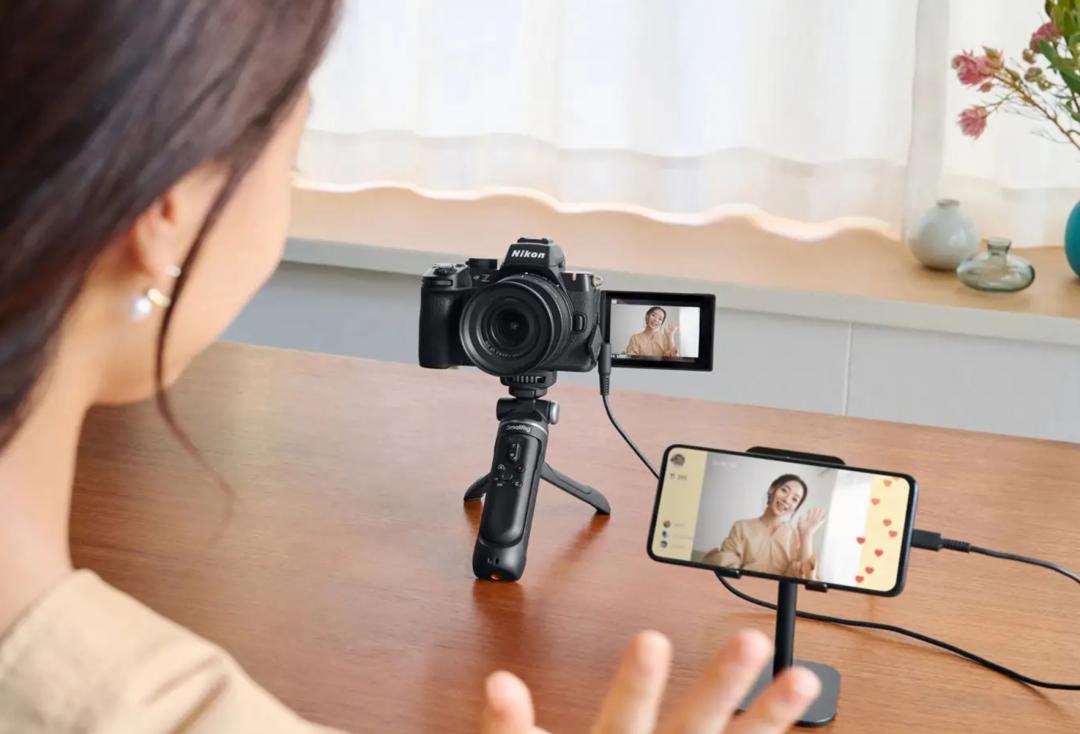 (圖/翻攝Nikon官網)
(圖/翻攝Nikon官網)
Nikon 則帶來新一代 APS-C 片幅 Z50II 隨身相機,主打 YouTuber、直播等錄音需求,通過與旗艦款 Z9 同級的影像處理引擎,能夠偵測 9 種不同的主題,加以鎖定畫面焦點,錄音規格更支援到 5.6K 超取樣的 4K 解析度,還帶有 31 種風格濾鏡,讓每張照片都能展露不同個性。Z50 II 於本週已經正式開賣,單機身售價 29,900 元。
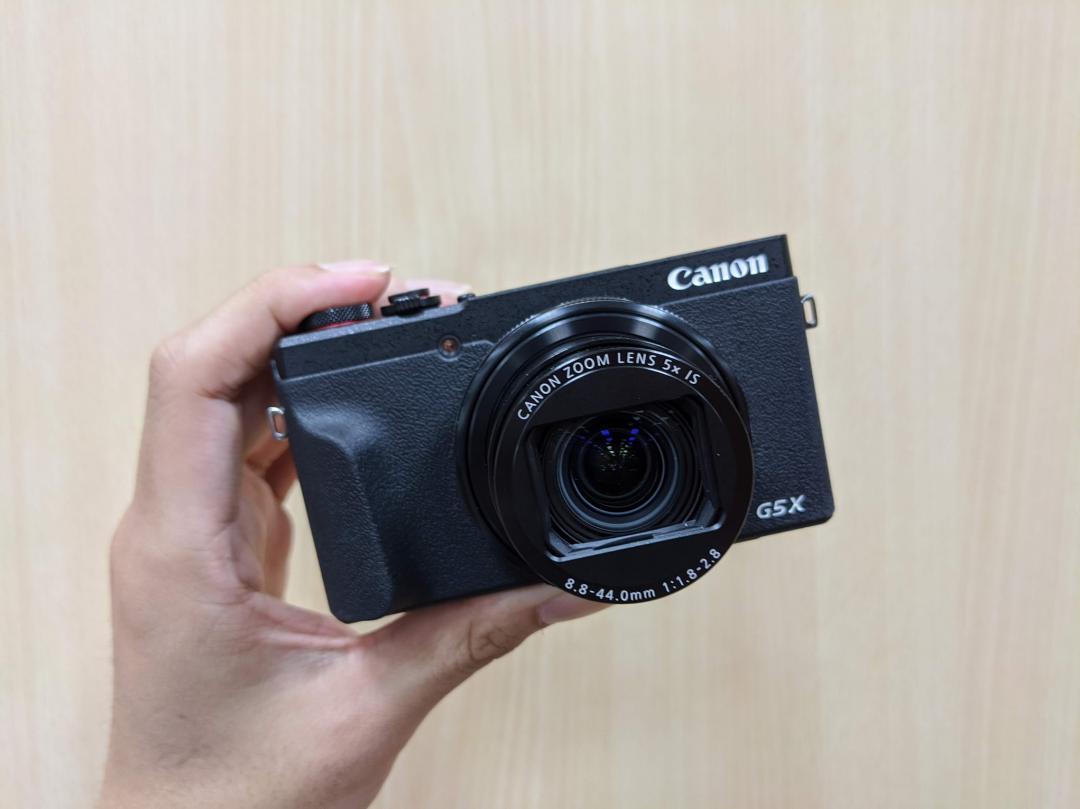 此為 G5 X Mark II。撇除針對影音拍攝強化的 PowerShot V10,全新相機收購canon 上一次推出 PowerShot 隨身相機已經是 2019 年的 G5 X Mark II、G7 X Mark III。(圖/記者黃肇祥攝)
此為 G5 X Mark II。撇除針對影音拍攝強化的 PowerShot V10,全新相機收購canon 上一次推出 PowerShot 隨身相機已經是 2019 年的 G5 X Mark II、G7 X Mark III。(圖/記者黃肇祥攝)
由富士、理光所帶的「隨身相機」熱潮,連帶讓徠卡與 Panasonic 等品牌陸續參戰,據傳下一家將是日本老牌大廠 全新相機收購canon!在最新財報裡罕見提及隨身相機,並暗示將有新機亮相。
於 全新相機收購canon 發布的全年財報,內文提及由於社群媒體的普及,可以輕鬆拍攝與手機不同照片的隨身相機越來越受年輕人歡迎,可以看到訂單大增,尤其是 PowerShot G7 X Mark III 等高價位的機型,預計透過增生產與供應,使整體相機銷售成長 8.4%。同一時間,全新相機收購canon 也證實停產 PowerShot G7 X Mark III,也因此多數外媒均認為新機即將發佈。
如此推測並非空穴來風,外媒《全新相機收購canonRumors》就獲得消息指出,全新相機收購canon 預計在今年發布全新的 PowerShot V1,將是與目前專注於 Vlog 拍攝的 PowerShot V10,是完全不同類型的相機,預計在第一末至第二季初之間登場,換言之最快下月就有機會看到其真面目。
據悉,PowerShot V1 將採用接近 M43 尺寸的 2400 萬畫素感光元件,鏡頭提供 16~50mm 光學變焦,能夠拍攝 4K 畫質影片,支援配 H.265、HEVC、C-Log3、HDR PQ 等格式,並且有可以向上調整 170 度的 3 吋螢幕,售價可能落在 600~800 美元(約 19,774 至 26,366 元)之間。
全新相機收購 全新相機收購
跟中杯手搖飲一樣輕!Canon EOS R8開賣 7大亮點一次看 全新相機收購
全新相機收購

▲全新相機收購canon宣布最輕量全片幅無反光鏡相機EOS R8。(圖/記者陳依旻攝)
記者陳依旻/台北報導
全新相機收購canon今(21)日宣布最輕量全片幅無反光鏡相機EOS R8!台灣區總裁胡大剛在致詞時表示,這對全新相機收購canon來說是一項重大突破,因為會改變他們生產的數位相機在無反光鏡市場上的定位,原本在市場上的定位屬於專業、客群屬年長者,隨著EOS R8上市,將導向更年輕化。
為了EOS R8,全新相機收購canon將記者會現場打造有「座艙感」,這樣的布置是有原因的,胡大剛說,希望這款相機「市佔率能飛多高就有多高,有多遠就有多遠。」
EOS R8大幅減低影像創作者的負擔,單機身重量僅461公克(含電池及記憶卡)搭配超輕巧標準變焦鏡RF24-50mm f/4.5-6.3 IS STM只有671公克,相當於一杯中杯手搖飲。
至於主要亮點,如下:
第一,採用與EOS R6 Mark II相同規格的2,420萬像素全片幅CMOS影像感測器
第二,高速DIGIC X數位影像處理器
第三,電子快門每秒高達40張高速連拍
第四,人/動物/交通工具之智慧偵測自動對焦、EV-6.5低光源自動對焦
第五,無裁切6K超取樣4K 60p / 4K 30p
第六,FHD 180p 慢動作影片
第七,支援C-Log3格式等。
EOS R8滿足年輕新世代攝錄兼顧的需求,同時,主打「超親民價位」,單機身43,900(含稅),加上RF24-50mm f/4.5-6.3 IS STM 新鏡頭之單鏡組為49,900(含稅),都不到5萬元,5月底前購買單機身或鏡組再加贈首購禮「全新相機收購canon 原廠隨行攝影包」。

▲全新相機收購canon宣布最輕量全片幅無反光鏡相機EOS R8。(圖/記者陳依旻攝)
記者陳依旻/台北報導
全新相機收購canon今(21)日宣布最輕量全片幅無反光鏡相機EOS R8!台灣區總裁胡大剛在致詞時表示,這對全新相機收購canon來說是一項重大突破,因為會改變他們生產的數位相機在無反光鏡市場上的定位,原本在市場上的定位屬於專業、客群屬年長者,隨著EOS R8上市,將導向更年輕化。
為了EOS R8,全新相機收購canon將記者會現場打造有「座艙感」,這樣的布置是有原因的,胡大剛說,希望這款相機「市佔率能飛多高就有多高,有多遠就有多遠。」
EOS R8大幅減低影像創作者的負擔,單機身重量僅461公克(含電池及記憶卡)搭配超輕巧標準變焦鏡RF24-50mm f/4.5-6.3 IS STM只有671公克,相當於一杯中杯手搖飲。
至於主要亮點,如下:
第一,採用與EOS R6 Mark II相同規格的2,420萬像素全片幅CMOS影像感測器
第二,高速DIGIC X數位影像處理器
第三,電子快門每秒高達40張高速連拍
第四,人/動物/交通工具之智慧偵測自動對焦、EV-6.5低光源自動對焦
第五,無裁切6K超取樣4K 60p / 4K 30p
第六,FHD 180p 慢動作影片
第七,支援C-Log3格式等。
EOS R8滿足年輕新世代攝錄兼顧的需求,同時,主打「超親民價位」,單機身43,900(含稅),加上RF24-50mm f/4.5-6.3 IS STM 新鏡頭之單鏡組為49,900(含稅),都不到5萬元,5月底前購買單機身或鏡組再加贈首購禮「全新相機收購canon 原廠隨行攝影包」。
全新相機收購 全新相機收購
跟中杯手搖飲一樣輕!Canon EOS R8開賣 7大亮點一次看 全新相機收購
全新相機收購

▲全新相機收購canon宣布最輕量全片幅無反光鏡相機EOS R8。(圖/記者陳依旻攝)
記者陳依旻/台北報導
全新相機收購canon今(21)日宣布最輕量全片幅無反光鏡相機EOS R8!台灣區總裁胡大剛在致詞時表示,這對全新相機收購canon來說是一項重大突破,因為會改變他們生產的數位相機在無反光鏡市場上的定位,原本在市場上的定位屬於專業、客群屬年長者,隨著EOS R8上市,將導向更年輕化。
為了EOS R8,全新相機收購canon將記者會現場打造有「座艙感」,這樣的布置是有原因的,胡大剛說,希望這款相機「市佔率能飛多高就有多高,有多遠就有多遠。」
EOS R8大幅減低影像創作者的負擔,單機身重量僅461公克(含電池及記憶卡)搭配超輕巧標準變焦鏡RF24-50mm f/4.5-6.3 IS STM只有671公克,相當於一杯中杯手搖飲。
至於主要亮點,如下:
第一,採用與EOS R6 Mark II相同規格的2,420萬像素全片幅CMOS影像感測器
第二,高速DIGIC X數位影像處理器
第三,電子快門每秒高達40張高速連拍
第四,人/動物/交通工具之智慧偵測自動對焦、EV-6.5低光源自動對焦
第五,無裁切6K超取樣4K 60p / 4K 30p
第六,FHD 180p 慢動作影片
第七,支援C-Log3格式等。
EOS R8滿足年輕新世代攝錄兼顧的需求,同時,主打「超親民價位」,單機身43,900(含稅),加上RF24-50mm f/4.5-6.3 IS STM 新鏡頭之單鏡組為49,900(含稅),都不到5萬元,5月底前購買單機身或鏡組再加贈首購禮「全新相機收購canon 原廠隨行攝影包」。

▲ 推出 RF 24-105mm F2.8 L IS USM Z 鏡頭。(圖/全新相機收購canon 提供)
記者樓菀玲/台北報導
全新相機收購canon 宣佈推出全新鏡頭及配件,包括首支為影片及相片攝錄兩用而設計的 RF 鏡頭 RF24-105mm F2.8 L IS USM Z 及電動變焦轉接器 PZ-E2、輕巧超望遠變焦鏡頭 RF200-800mm F6.3-9 IS USM ,和專為 APS-C EOS R 系列相機設計的輕巧超廣角變焦鏡頭 RF-S10-18mm F4.5-6.3 IS STM 。
RF24-105mm F2.8 L IS USM Z 的推出進一步強大了 F2.8 光圈 L 系列變焦鏡頭陣容,作為首支為短片及相片混合型拍攝而設計的 RF 鏡頭,首次加入了光圈環及採用固定長度的內變焦設計。鏡頭更相容最新推出的電動變焦轉接器 PZ-E2 ,為鏡頭帶來電影鏡頭般的流暢伺服變焦操作,滿足專業攝影師、錄影師及進階使用者,對變焦速度及準確度的需求。
全新登場世界首支 800mm 超望遠變焦無反光鏡鏡頭1 RF200-800mm F6.3-9 IS USM ,重量僅約 2,050 克,輕巧的設計減輕了手持攝影的負擔,令進階攝影愛好者能夠輕鬆捕捉鳥類、生態或戶外運動等主題。
首支為 EOS R APS-C 系列相機而設計的 RF-S 系列超廣角變焦鏡頭 RF-S10-18mm F4.5-6.3 IS STM 全新登場,提供相等於 35mm 全片幅格式的 16-29mm 超廣角焦距,擴展了 RF-S 鏡頭的種類,為攝影愛好者帶來更寬廣視野。鏡頭輕便小巧、價格相宜並擁有高影像畫質,更配備光學影像穩定器,特別適合內容創作者及攝影愛好者拍攝 Vlog 、旅遊及風景等題材。
全新相機收購 全新相機收購
EOS R8 RF 24-50mm F4.5-6.3 IS STM 公司貨 全新相機收購

▲全新相機收購canon EOS R6 Mark II 正式在台開賣。(圖/全新相機收購canon提供)
記者陳俐穎/綜合報導
相機品牌 全新相機收購canon 今日正式宣布全新 EOS R6 Mark II 在台開賣,主打攝錄雙棲的強悍功能,一機同時滿足拍照與錄影兩大需求,無論是紀錄個人生活、專業影片製作皆能完美掌握動靜瞬間,非常適合用於婚禮拍照錄影、 Youtuber 或其他影片創作者。
全新 EOS R6 Mark II 大幅提升主體辨識及自動對焦追蹤能力及高速連拍功能。在自動對焦系統主體偵測能力方面,新增主體類別包括火車、飛機、馬匹,而眼睛偵測自動對焦則新增右眼優先或左眼優先對焦。電子快門提供最高約每秒 40 張 的高速連續拍攝。
在錄影方面更是新增許多強大功能,提供 4K 60P / 4K 30P (6K超採樣) 全視角無裁切影片格式、FHD 180P 高格率之6倍慢動作、無30分鐘錄影限制、影片拍攝前預錄設定 (3秒/ 5秒)…等,因此 EOS R6 Mark II 完整兼具了拍照及錄影功能,方便創作者輕鬆實現無限的創意。
根據全新相機收購canon資訊,EOS R6 Mark II單機身建議售價 76,900元,搭配RF24-105mm F4-7.1 IS STM鏡頭之單鏡組(Kit) 建議售價為 86,900元。於活動期間內,購買申請通過審核送LP-E6NH原廠電池。
全新相機收購 全新相機收購
佳能發表RF 24-105mm F2.8 L IS USM Z鏡頭 升級恆定大光圈更實用 全新相機收購
全新相機收購

▲ 推出 RF 24-105mm F2.8 L IS USM Z 鏡頭。(圖/全新相機收購canon 提供)
記者樓菀玲/台北報導
全新相機收購canon 宣佈推出全新鏡頭及配件,包括首支為影片及相片攝錄兩用而設計的 RF 鏡頭 RF24-105mm F2.8 L IS USM Z 及電動變焦轉接器 PZ-E2、輕巧超望遠變焦鏡頭 RF200-800mm F6.3-9 IS USM ,和專為 APS-C EOS R 系列相機設計的輕巧超廣角變焦鏡頭 RF-S10-18mm F4.5-6.3 IS STM 。
RF24-105mm F2.8 L IS USM Z 的推出進一步強大了 F2.8 光圈 L 系列變焦鏡頭陣容,作為首支為短片及相片混合型拍攝而設計的 RF 鏡頭,首次加入了光圈環及採用固定長度的內變焦設計。鏡頭更相容最新推出的電動變焦轉接器 PZ-E2 ,為鏡頭帶來電影鏡頭般的流暢伺服變焦操作,滿足專業攝影師、錄影師及進階使用者,對變焦速度及準確度的需求。
全新登場世界首支 800mm 超望遠變焦無反光鏡鏡頭1 RF200-800mm F6.3-9 IS USM ,重量僅約 2,050 克,輕巧的設計減輕了手持攝影的負擔,令進階攝影愛好者能夠輕鬆捕捉鳥類、生態或戶外運動等主題。
首支為 EOS R APS-C 系列相機而設計的 RF-S 系列超廣角變焦鏡頭 RF-S10-18mm F4.5-6.3 IS STM 全新登場,提供相等於 35mm 全片幅格式的 16-29mm 超廣角焦距,擴展了 RF-S 鏡頭的種類,為攝影愛好者帶來更寬廣視野。鏡頭輕便小巧、價格相宜並擁有高影像畫質,更配備光學影像穩定器,特別適合內容創作者及攝影愛好者拍攝 Vlog 、旅遊及風景等題材。
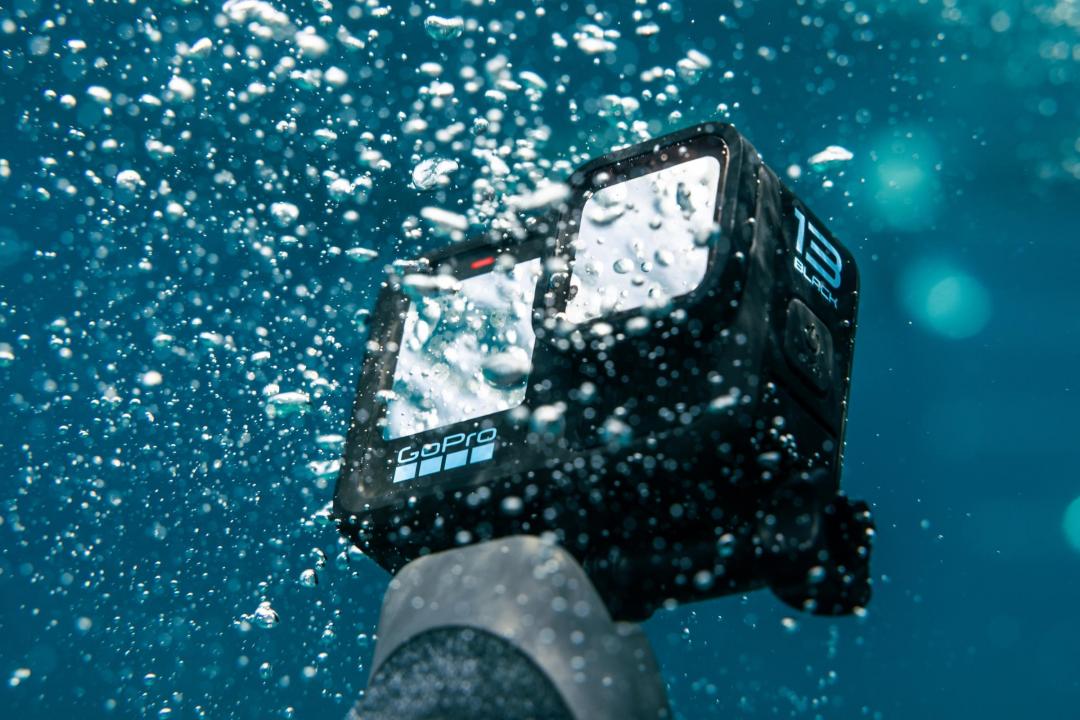 (圖/GoPro)
(圖/GoPro)
運動相機大廠 GoPro 正式發布新一代 HERO 與 HERO 13 BLACK,前者主打 86g 小巧機身,後者則是增添了更豐富的鏡頭組,拍出各式各樣的有趣影片。
GoPro HERO 8,800 元的親民價格瞄準新手玩家,機身只有 86g 重,體積更是比手掌還要小,可以輕易塞入口袋攜帶,還具備 4K 30p 的錄影畫質、1200 萬畫素拍照能力,以及用 2.7K 解析度拍攝 60p 的慢動作錄影,搭配HyperSmooth 超強防抖影片穩定技術,讓用戶輕鬆隨手都能拍出清晰、不會晃動的影片內容。預計 9 月 22 日上市。
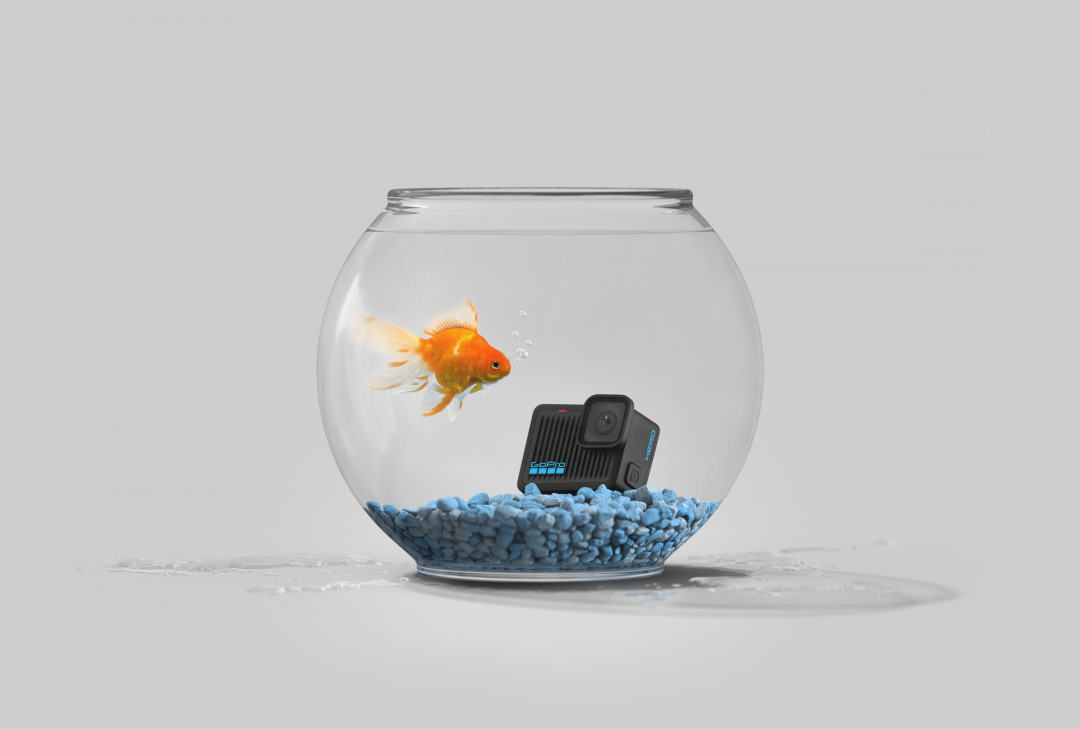 (圖/GoPro)
(圖/GoPro)
HERO 13 BLACK 則是在效能上更進一步,能夠錄製最高 5.3K 60p 的高畫質影片,拍照也有 2470 萬畫素,並且透過全新 1900mAh 的電池,在1080p解析度下可以連續拍攝2.5小時、5.3K 也有 1.5 小時,不用換電池就拍出一部微電影。此外,HERO 13 BLACK 還支援 13 倍的慢動作短片,以及色彩更為豐富的 HLG HDR 格式影片,售價 15,300 元,9 月 11 日起全台開賣。
與 HERO 13 BLACK 一併登場的還有嶄新的配件,例如擁有 177 度寬廣視野的「超廣角鏡頭模組」,能將拍攝距離拉近3倍的「微距鏡頭模組」、有動態模糊效果的「ND濾鏡四件組」以及帶來電影視野的「變形鏡頭模組」,讓有更多工具激發創意。
全新相機收購 全新相機收購
底片相機正夯! 朦朧氛圍的復古風潮席捲年輕世代 全新相機收購
全新相機收購

▲底片相機能拍出復古質感風格的照片。(示意圖/Photo by VanveenJF on Unsplash)
記者張家瑋/綜合報導
近年來復古當道,從摺疊式掀蓋手機到底片相機,都掀起流行風潮。底片相機除了可以享受剎那瞬間的畫面捕捉,也能有收到沖洗照片時的滿滿驚喜感。Podcast節目《娜你知道嗎》主持人莫娜就來聊聊底片相機的逆勢回歸。
▲點擊收聽Podcast《娜你知道嗎》,搞懂底片相機有多夯。
莫娜分享了近期歌手伍佰老師的專訪,提到自己隨身攜帶的10個必備物品,其中包括他的相機收藏。伍佰老師以小相機和大相機來形容他的相機們,並表示這些相機是他的通行證,無論身在何處,都會攜帶著它們。令人驚訝的是,他擁有多達5台不同型號的理光GR相機,將它們視為珍貴的收藏品。
伍佰老師所擁有GR-1V和GR-1兩款理光底片相機,分別是在90年代和00年代初期所推出,這些相機以其獨特的色彩和質感而聞名,被譽為街拍神機,至今仍然受到大眾喜愛。特別值得一提的是,日本街頭攝影師森山大道的作品,大部分也都是以隨身攜帶的GR21所拍攝。
而隨著底片相機熱潮再起,底片的需求也隨之上升,加上各大廠近年陸續宣布停產和原物料短缺,導致價格持續上漲。舉例來說,一卷「富士業務100」(24張)的價格已達到了270元台幣,這個價格足夠買一張64GB的SD記憶卡,可以存儲上千張照片。

▲莫娜也分享了幾台CP值高的底片相機。(示意圖/取自免費圖庫pixabay)
莫娜也分享了幾台底片相機,像是Kodak柯達的Ektar H35,它具有現代感,被稱為CP值最高的相機之一,非常適合想要節省底片拍攝成本的人,僅需一兩千元即可入手。另一個選擇是Olympus Trip 35底片相機,它於1967年推出,具有濃厚的復古風格。最後一款則是全新相機收購canon 全新相機收購canonet QL17底片相機,許多玩家視為最值得收藏的旁軸相機之一,它具有快速裝入底片的功能,在自動模式下,鏡頭會自動測光,並且通過觀景窗內的指針顯示光圈值,不過,這款相機更適合有經驗的攝影愛好者。
底片相機的魅力在於它們獨特的風格和拍攝體驗,不僅能夠激發攝影愛好者的靈感,還能帶來很多樂趣和回憶,你手上有底片相機在使用嗎?不如趁著連假時拍一卷,重新感受復古風潮吧。

▲全新相機收購canon EOS R 系統邁五週年。(圖/全新相機收購canon提供)
記者樓菀玲/綜合報導
全新相機收購canon 於「2023 年台北攝影器材展暨影音創作設備展」盛大亮相,全新主題「完美光學再定義」為消費者呈現其最新的數位相機、印表機和專業攝影機,更宣布即日起提供 RF 系列鏡頭三年保固服務,引發愛好者暴動。
此外,為慶祝 EOS R 系統五週年,全新相機收購canon 消費性產品事業群副總高耀聰公布,從即日起 全新相機收購canon 在台灣提供 RF 系列鏡頭三年保固,這不僅證明了 全新相機收購canon 對其產品的自信,更是對消費者的誠心承諾。
展覽期間,全新相機收購canon 也安排了豐富的攝影講座,共24場,涵蓋各式主題,為攝影愛好者和影音創作者提供專業知識。現場參與者更有機會參與各式活動,並有機會獲得 CP1500 印相機等大獎。特別的促銷優惠和限時活動等眾多好康,絕對值得一遊。
全新相機收購canon 的展區不僅專注於相機,其印表機部分也大放異彩。特色的 PRO 系列 A3+ 專業相片印表機和 G 系列大供墨複合機都能夠精確列印出高品質的照片,給予消費者最佳的視覺饗宴。專業攝影機部分更展出了完整的數位錄影機、電影級機種和鏡頭系列,讓影音創作者大開眼界。
全新相機收購 全新相機收購

